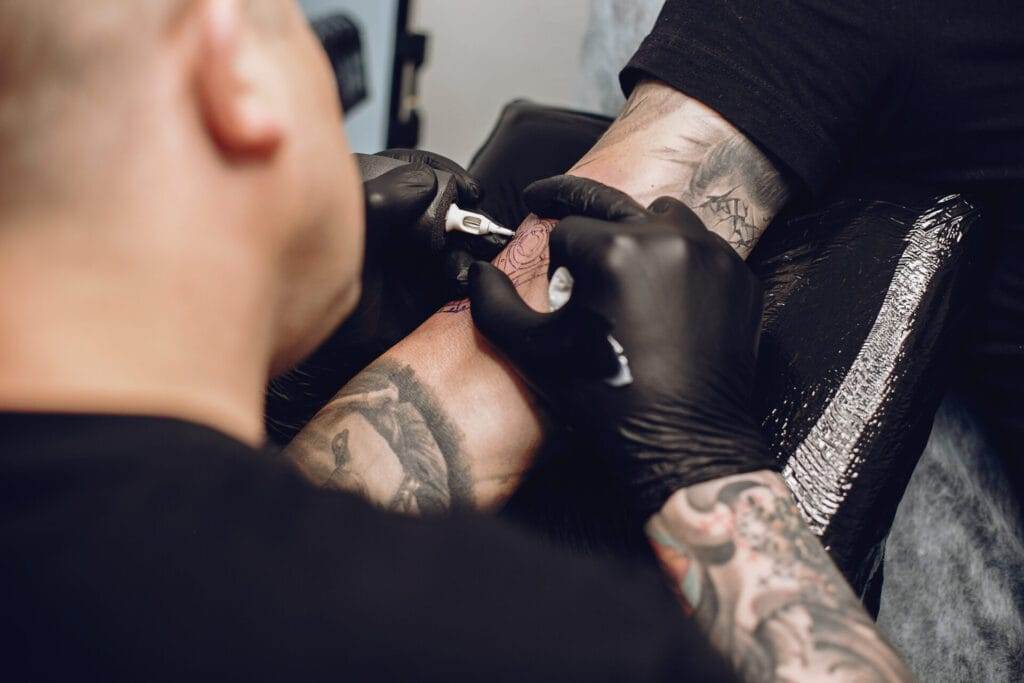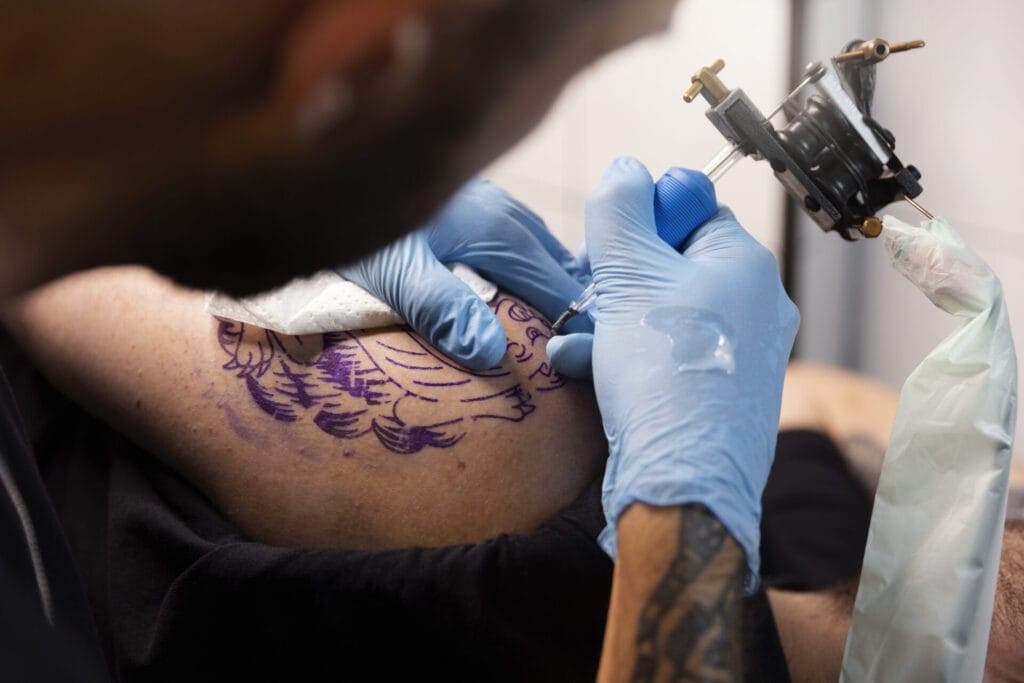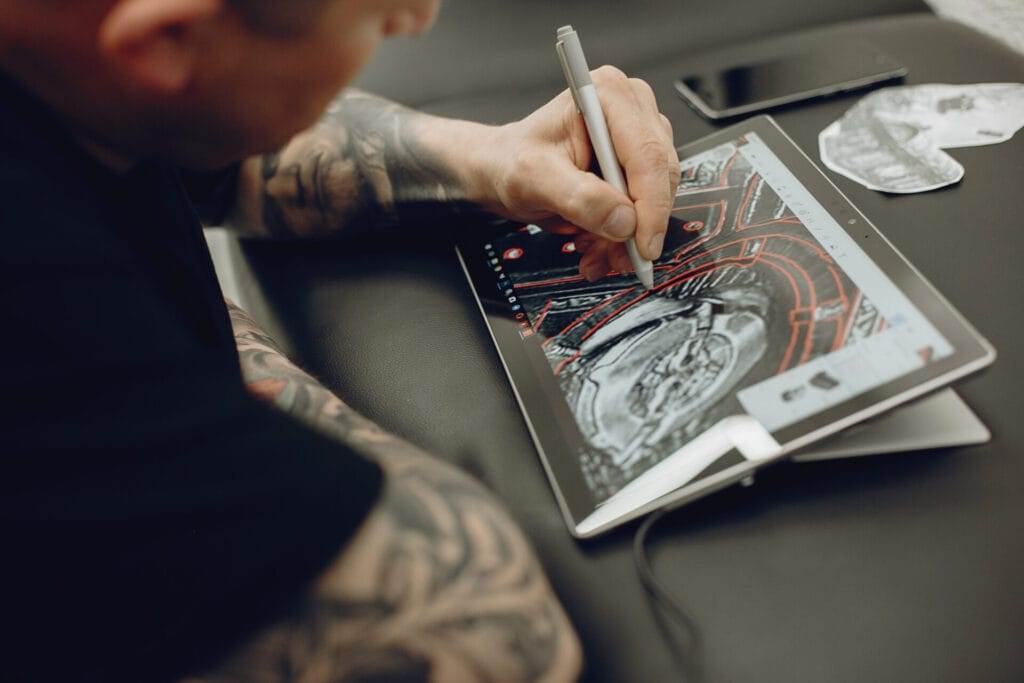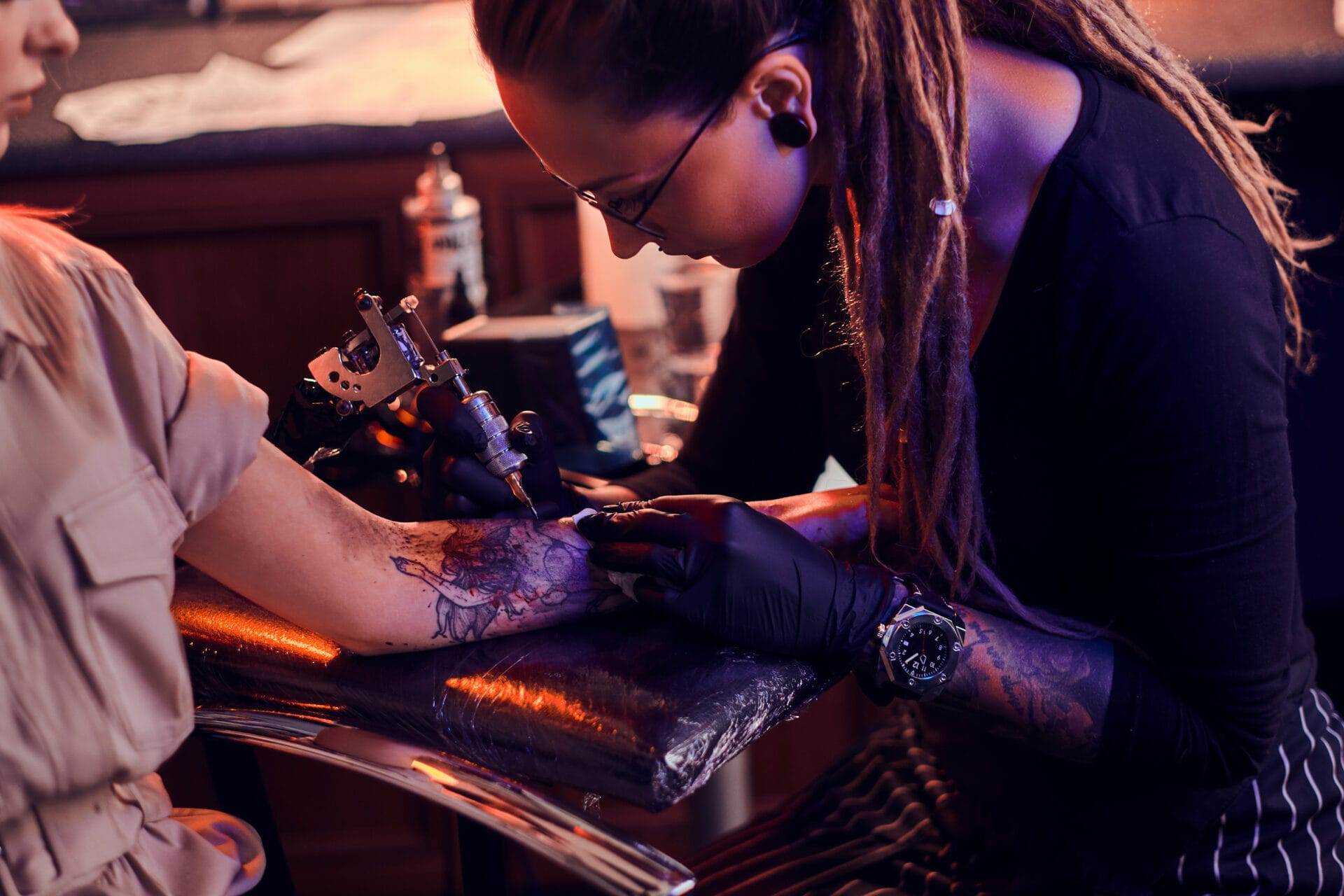
Tattooing is an ancient art form that has been practiced for thousands of years. The history of tattooing dates back to ancient civilizations such as the Egyptians, Greeks, and Romans, who used tattoos for various purposes including religious rituals, identification, and decoration. In many cultures, tattoos hold deep cultural and spiritual significance. They can symbolize a person’s beliefs, values, and personal experiences.
In different cultures around the world, tattoos have different meanings and purposes. For example, in Polynesian culture, tattoos are seen as a rite of passage and a way to honor one’s ancestors. In Japanese culture, tattoos are associated with the Yakuza and are often used to symbolize loyalty and strength. In Native American culture, tattoos are used to tell stories and represent one’s connection to nature.
The Importance of Sketching in Tattoo Design
Sketching is a crucial part of the tattoo design process. It allows the artist to visualize their ideas and create a unique design that is tailored to the individual’s preferences. Sketching also helps the artist to refine their ideas and make adjustments before transferring the design onto the skin.
When sketching a tattoo design, it is important to consider factors such as size, placement, and style. The size of the tattoo will determine how much detail can be included in the design. The placement of the tattoo will also affect the overall look and feel of the design. Different styles of tattooing require different techniques and approaches, so it is important to consider the style that best suits the design.
Finding Inspiration for Unique Tattoo Designs
Finding inspiration for a unique tattoo design can be a challenging task. However, there are many sources of inspiration that can help you create a design that is meaningful and personal to you. One source of inspiration is nature. Nature is full of beautiful patterns, colors, and shapes that can be incorporated into a tattoo design. Animals, plants, and landscapes can all serve as inspiration for a unique tattoo design.
Another source of inspiration is art. Paintings, drawings, and sculptures can all provide ideas for tattoo designs. You can also find inspiration in literature, music, and other forms of creative expression. The key is to find something that resonates with you and reflects your personal interests and experiences.
When designing a tattoo, it is important to incorporate personal meaning into the design. This can be done through symbols, quotes, or images that hold significance to you. For example, if you have overcome a difficult challenge in your life, you may choose to incorporate a phoenix into your tattoo design to symbolize rebirth and resilience. By adding personal meaning to your tattoo design, you are creating a design that is unique to you and tells your story.
The Role of Color in Tattooing
Color plays a crucial role in the overall look and feel of a tattoo. It can enhance the design and bring it to life. When choosing the right color palette for your tattoo design, it is important to consider factors such as skin tone, style, and personal preference.
Different colors have different meanings and associations. For example, red is often associated with passion and love, while blue is associated with calmness and tranquility. It is important to choose colors that resonate with you and reflect the emotions or qualities you want to convey through your tattoo.
The placement of color in a tattoo design is also important. Some designs may benefit from bold, vibrant colors, while others may require more subtle shading and blending. It is important to work closely with your tattoo artist to determine the best color palette for your design.
Choosing the Right Placement for Your Tattoo
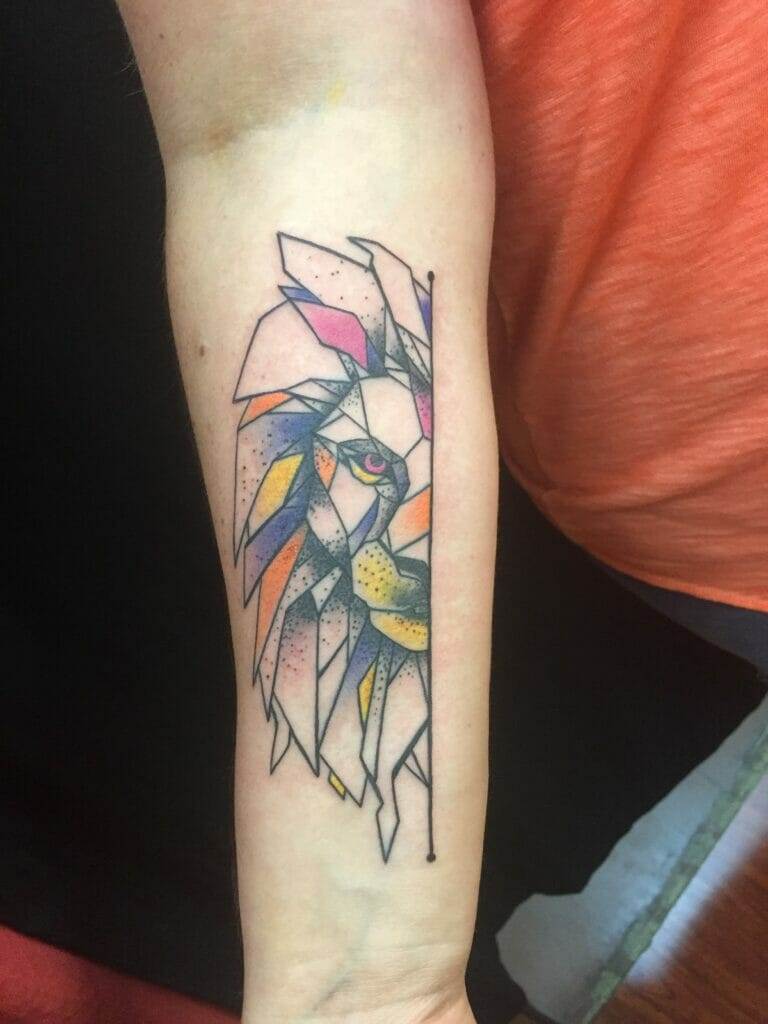
Choosing the right placement for your tattoo is an important decision that should not be taken lightly. The placement of a tattoo can affect its visibility, meaning, and overall impact. When choosing the placement of your tattoo, it is important to consider factors such as size, style, and personal preference.
Size is an important factor to consider when choosing the placement of your tattoo. Larger designs may require more space and may be better suited for areas such as the back, chest, or thigh. Smaller designs can be placed on areas such as the wrist, ankle, or behind the ear.
Style is another important factor to consider when choosing the placement of your tattoo. Different styles of tattooing may require different placement to achieve the desired effect. For example, traditional tattoos are often placed on areas such as the arms or legs, while more delicate designs may be better suited for areas such as the ribs or collarbone.
Popular tattoo placements also have their own meanings and associations. For example, a tattoo on the wrist is often associated with strength and determination, while a tattoo on the back of the neck is often associated with independence and freedom. It is important to choose a placement that aligns with your personal values and intentions.
The Importance of Communication with Your Tattoo Artist
Effective communication with your tattoo artist is crucial in ensuring that your design turns out exactly how you envision it. It is important to clearly communicate your ideas, preferences, and expectations to your tattoo artist so that they can create a design that meets your needs.
When communicating with your tattoo artist, it is important to be specific and provide as much detail as possible. Bring reference images, sketches, or any other visual aids that can help convey your ideas. Be open to feedback and suggestions from your tattoo artist, as they have experience and expertise in creating tattoos.
Listening to your tattoo artist’s suggestions is also important. They may have insights or recommendations that can improve the design or make it more suitable for your body. Remember that tattoo artists are professionals who have dedicated their careers to creating beautiful tattoos, so it is important to trust their expertise.
The Tattooing Process: From Sketch to Skin
The tattooing process involves several steps, from the initial sketch to the final tattoo. The first step is to consult with your tattoo artist and discuss your design ideas. They will then create a sketch based on your ideas and preferences. Once the sketch is finalized, the tattoo artist will transfer the design onto your skin using a stencil or freehand technique.
Before starting the tattoo, the artist will clean and prepare the area of skin where the tattoo will be placed. They will then begin the tattooing process, using a tattoo machine or hand tools to inject ink into the skin. The artist will work slowly and carefully, ensuring that each line and detail is precise and accurate.
During the tattooing process, it is important to communicate with your tattoo artist if you are experiencing any discomfort or pain. They can make adjustments or take breaks as needed to ensure your comfort. Once the tattoo is complete, the artist will clean and bandage the area to protect it from infection.
Caring for Your New Tattoo
Proper aftercare is essential to ensure that your tattoo heals properly and looks its best. After getting a new tattoo, it is important to follow your tattoo artist’s instructions for care and maintenance. This may include keeping the tattoo clean, applying ointment or lotion, avoiding direct sunlight, and avoiding activities that may cause excessive sweating or friction.
It is also important to avoid common mistakes during the healing process. These include picking or scratching at the tattoo, exposing it to excessive moisture or heat, wearing tight clothing that rubs against the tattoo, and using harsh soaps or lotions on the area.
By following proper aftercare instructions and avoiding common mistakes, you can ensure that your tattoo heals properly and retains its vibrant colors and sharp lines.
The Evolution of Tattooing: Traditional vs. Modern Styles
Tattooing has evolved significantly over the years, with new styles and techniques constantly emerging. Traditional tattooing, also known as old school or classic tattooing, is characterized by bold lines, solid colors, and iconic imagery such as anchors, skulls, and roses. Traditional tattoos are often done in a limited color palette and have a timeless, vintage look.
Modern tattoo styles, on the other hand, are more diverse and experimental. These styles include realism, watercolor, geometric, and abstract tattoos. Realism tattoos aim to replicate the appearance of real objects or people, while watercolor tattoos use vibrant colors and flowing lines to create a painterly effect. Geometric tattoos feature precise lines and shapes, while abstract tattoos use bold colors and unconventional imagery.
The evolution of tattooing has been driven by advancements in technology and changes in societal attitudes towards tattoos. Today, tattoos are more widely accepted and appreciated as a form of art and self-expression. Tattoo artists have more tools and resources at their disposal, allowing them to create intricate designs and achieve more realistic results.
Tattooing as a Form of Self-Expression
Tattoos have long been used as a form of self-expression. They allow individuals to express their beliefs, values, and personal experiences in a visual and permanent way. Tattoos can serve as reminders of important milestones or events in one’s life, or they can be used to symbolize personal qualities or aspirations.
Tattoos can also be a way to reclaim one’s body and assert one’s identity. In a society that often places unrealistic standards on beauty and appearance, tattoos can be a way to challenge these norms and embrace one’s individuality. They can serve as a form of empowerment and self-acceptance.
The emotional significance of getting a tattoo should not be underestimated. For many people, getting a tattoo is a deeply personal and meaningful experience. It can be a way to honor loved ones, commemorate important life events, or simply express oneself in a unique and creative way.

Embracing the Beauty of One-of-a-Kind Tattoos
In conclusion, tattoos are a form of art and self-expression that have been practiced for thousands of years. They hold deep cultural and spiritual significance in many cultures around the world. Sketching is an important part of the tattoo design process, allowing artists to create unique and personalized designs.
Finding inspiration for tattoo designs can come from nature, art, literature, and personal experiences. Color plays a crucial role in the overall look and feel of a tattoo, and choosing the right color palette is important. Placement is also an important consideration, as it can affect the visibility and meaning of a tattoo.
Effective communication with your tattoo artist is crucial in ensuring that your design turns out as you envision it. The tattooing process involves several steps, from the initial sketch to the final tattoo. Proper aftercare is essential to ensure that your tattoo heals properly and looks its best.
Tattooing has evolved over time, with traditional and modern styles offering different aesthetics and techniques. Tattoos are a form of self-expression that can hold deep emotional significance for individuals. Embracing the beauty of one-of-a-kind tattoos allows individuals to express their individuality and tell their own unique stories.

